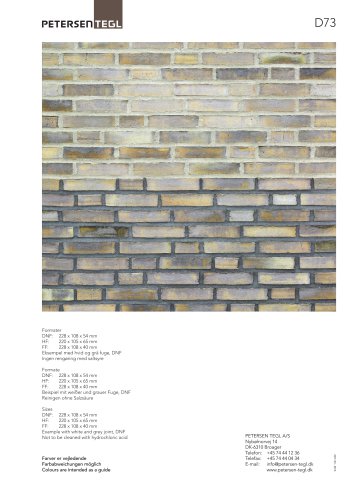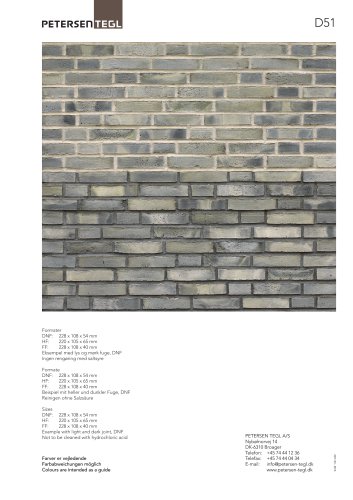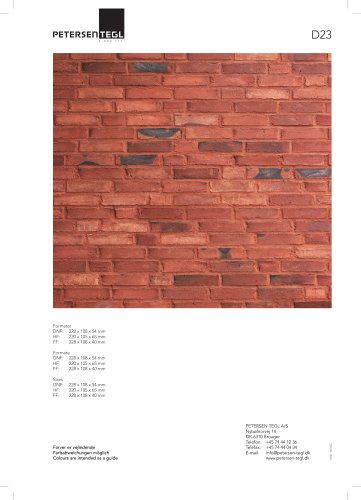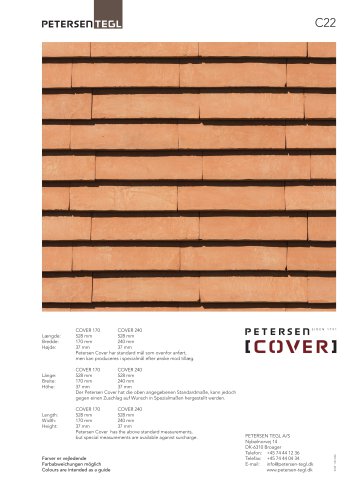
Catalog excerpts

Facts on bricks and frost In countries with moist and cold winters with many changes from frost to thaw, bricks must be frost resistant. Nørholm Watermill, which was built in 1792 – the year after Petersen Tegl was founded – is a good example of brickwork that is unaffected by frost. Petersen Tegl mainly uses clay from the surroundings of the brickworks, where clay has been dug for brick production for many centuries. Brick from Nørholm Watermill. With its optimum pore structure the brick has been impervious to frost damage for more than 200 years Broken | Cut At Petersen Tegl the clay is pugged, formed and pressed using techniques duplicating the methods in use when all work was manual. The method gives the clay the optimum texture with capillars and air voids leaving room for the water to expand when it freezes, without damaging the brick. The fact that bricks can absorb water does not in itself constitute a risk of frost damage. Coal-fired brick from Petersen Tegl. The pore formation is optimum, and no frost damage will occur. Broken | Cut Petersen Tegl’s bricks are clinker-fired, of course. Frost damage on clinker-fired bricks appeared only when, about 100 years ago, the worm press was invented. The worm presses the clay into the mould, forming a layered texture, which is clearly seen in the three, red bricks to the left. Due to the texture of the clay*, these layers may work as “flat” capillaries, sucking full of water. When the water freezes, these layers are pressed apart, and frost cracking may develop, which is clearly seen in the perforated brick to the left. Brick produced in a worm press. The clay is layered, and frost damage has occurred. When the worm press produces the bricks correctly, the result is frost resistant bricks. *) Clay is plastic, and why is that? In an electron microscope it is possible to see that the clay minerals are in the form of plates and discs. When water enters the space between these, forces occur which keep the clay plates – discs – together, and the clay may be formed into bricks, tiles, etc. To simplify this effect one may say that two, dry glass plates – discs – can be separated. If water enters the space between them, they ‘stick’ together, but allow shear. Perforated brick with frost damage
Open the catalog to page 1


























